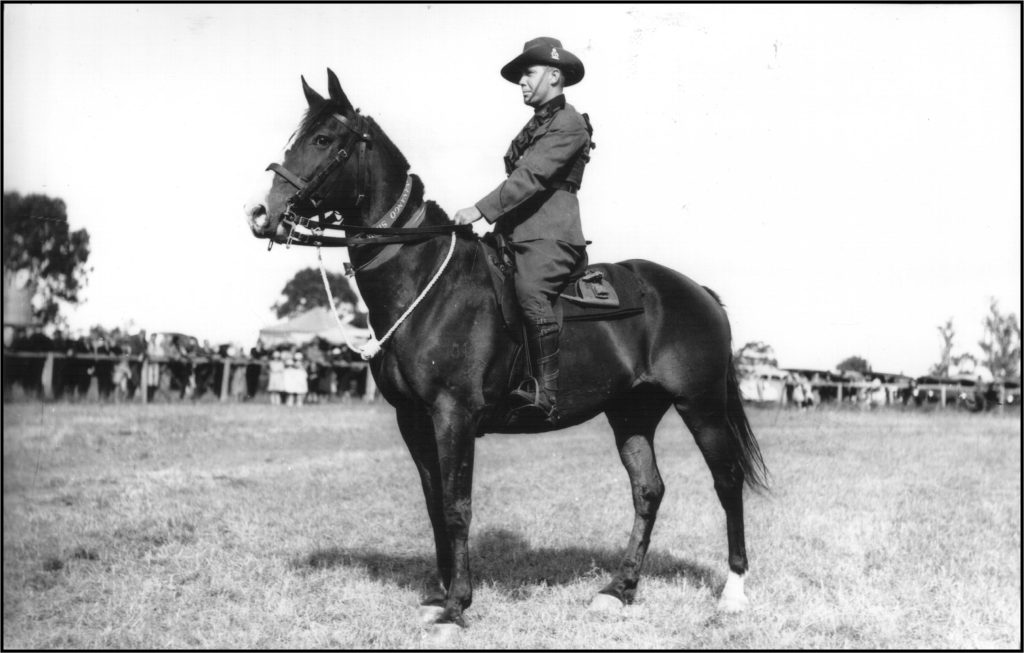1920 – 1950
By this time the Great Depression was causing misery and the Shire Councils were funded by the Federal government to provide occasional unskilled labouring jobs for the unemployed and the homeless. These ‘relief programs’ were still being recorded in Esk Shire Council notes in 1937. In Toogoolawah the Nestles Condensed Milk Factory closed in 1929 and at the local state school it was estimated that half the families of the children attending were on relief.
In 1928 a commission of enquiry recommended the Stanley Gorge as the site for a dam and the early road work providing access to the site was completed by relief work. Henry Somerset was still alive to see his dream come true. The Stanley River Works Board commenced work on the dam and laid out the new town in 1935 and it was renamed Somerset Dam on 11 January 1936. Henry Somerset died on 5 April 1936.

On 26 June 1927 the Nestle’s factory agreed to supply electricity to the Esk Shire Council for the town of Toogoolawah and this contract was honoured until 1935 after the milk processing part of the factory closed. Then the agreement was purchased by Ipswich Electric Supply Co. The Esk Dairy Cooperative declined to provide a similar supply for Esk. In March 1932 Lowood received electricity from Ipswich and the Nanango Butter factory supplied Nanango from 1933 to 1948 after which it was supplied by Kingaroy Power Station. Power was provided to Esk (1935), Coominya and Somerset Dam (1936), and to Yarraman by Charlie Budgen’s privately owned Power Station from 1939 to 1954. By this time Budgen was also supplying Blackbutt and Benarkin. After 1954 the power in this area was provided by Howard Power Station and after 1984 by Tarong Power Station. The Esk Shire Council was unable to provide electricity to the towns in the Brisbane River Valley between Esk and Yarraman before 1952.
The need for additional resources to bring Queensland out of the depression encouraged CSRO to fund (later Professor, UQ) Dorothy Hill’s search for coal in 1930 over a 760 square mile area from Kipper Creek and Bellevue to Avoca Vale and heads of Sheep Station Creek. The deposits were not found to be commercially viable. Copper had been mined at Eskdale in 19th century and there had been gold diggings established at Jimna and Nanango. In 1934 a small calcite mine was established at Ottaba between Esk and Toogoolawah.
As in 1915, young men enlisted for WWII and the Brisbane Valley was without manpower again to maintain the pastoral industries that were still the basis of its prosperity. Women and children worked the cattle and children left when they reached enlistment age, and sometimes considerably earlier. An inland defence road was built that consisted of 8 miles of paved road with three timber bridges on the Brisbane Valley Road and all the necessary equipment was delivered to the Moore railway station. Pilots trained at Lowood and Watts bridge (Toogoolawah) airfields. There was a field hospital at Harlin where troops enjoyed some R&R. They were entertained by local support groups and offered fellowship in the local churches. Wartime marriages were not uncommon.

But the young men who returned from the theatres of war had changed. They had taken to war the opportunism and resilience of country workers that made them effective if sometimes insubordinate soldiers. Their service had, of necessity, included training in cutting-edge technology. They had seen their friends die over contested ownership of land. Many of the WWII veterans were now skilled enough to move into employment that had remained closed to them before 1940 and education, not land resettlement, was a government priority.
The Commonwealth Government offered monthly allowances of £9/8/0 to a single man and £13/6/8 to a married man with at least one child for schooling, vocational training or university study if they were eligible and this allowance continued until they had finished their degree. They were offered preferential placement in jobs, there was full employment and a shorter working week was introduced soon after. Townships without industry like Ottaba and Colinton disappeared.
| Census Date | Esk Shire Male/Female | Nanango Shire Male/Female | Government State/ Federal | ||
| 1921 | 4234 (2018 under 21, 2204 over 21, 12 not stated) | 3691 | 2012 (958 under 21, 1048 over 21, 6 not stated | 1615 | Theodore, ALP/Hughes, Nationalist |
| 1921 | Total = 7825 | Total = 3627 | |||
| 1933 | 4133 (1769 under 21, 2360 over 21) | 3521 | 2259 (1001 under 21, 1252 over 21) | 1814 | Forgan Smith, ALP/ Lyons, United Australia |
| 1933 | Total = 7654 | Total = 4073 | |||
| 1947 | 3809 (1476 under 21, 2316 over 21, 17 not stated) | 3328 | 2286 (930 under 21, 1346 over 21, 10 not stated) | 1898 | Hanlon, ALP/Chifley, ALP |
| 1947 | Total = 7137 | Total = 4184 | |||
| 1954 | 3681 | 3304 | 2062 | 1876 | Gair, DLP/Menzies, Liberal |
| 1954 | Total = 6985 | Total = 3938 | |||
| 1961 | 3426 | 3004 | 1878 | 1764 | Nicklin, Country/Menzies, Liberal |
| 1961 | Total = 6430 | Total = 3642 | |||
| 1966 | Nicklin, Country/Holt, Liberal | ||||
| 1966 | Total = 6120 (Esk 682, Lowood 631, Toogoolawah 721) | Total = 3501 (Urban Nanango 1300, Rural Nanango, 2201) | |||
| “ 1985: Coominya State School growing because of population increase from subdivision development in the area – mid 1960’s the school was threatened with closure because of low enrolments and in 1972 enrolment was only 38. In 1980, enrolment = 80, and in 1985 = 210. School involved in community access to school facilities. (QT 18/6/1985 p. 6/7) Queensland Times” | |||||
| 1981 | 4334 | 3756 | 2275 | 1874 | Petersen, Country /Frazer, Liberal |
| 1981 | Total = 8090 | Total = 4149 | |||
| 1986 | 4742 | 4367 | 2787 | 2539 | Petersen, Country /Hawk, ALP |
| 1986 | Total = 9109 | Total = 5326 | |||
Another soldier settlement scheme was introduced after WWII with a proviso that returned men were to be resettled in their own area where possible. But the inexorable slide in population from rural to urban continued. There had been almost 20% increase in population of Queensland between 1900 and 1910. Between 1921 and 1966 there had been a 22% decrease in population in the Esk Shire although the Nanango Shire had only experienced a 0.35% decrease during the same period. The two councils adopted very different strategies to arrest this decline.
By this time the Great Depression was causing misery and the Shire Councils were funded by the Federal government to provide occasional unskilled labouring jobs for the unemployed and the homeless. These ‘relief programs’ were still being recorded in Esk Shire Council notes in 1937. In Toogoolawah the Nestles Condensed Milk Factory closed in 1929 and at the local state school it was estimated that half the families of the children attending were on relief.
In 1928 a commission of enquiry recommended the Stanley Gorge as the site for a dam and the early road work providing access to the site was completed by relief work. Henry Somerset was still alive to see his dream come true. The Stanley River Works Board commenced work on the dam and laid out the new town in 1935 and it was renamed Somerset Dam on 11 January 1936. Henry Somerset died on 5 April 1936.
On 26 June 1927 the Nestle’s factory agreed to supply electricity to the Esk Shire Council for the town of Toogoolawah and this contract was honoured until 1935 after the milk processing part of the factory closed. Then the agreement was purchased by Ipswich Electric Supply Co. The Esk Dairy Cooperative declined to provide a similar supply for Esk. In March 1932 Lowood received electricity from Ipswich and the Nanango Butter factory supplied Nanango from 1933 to 1948 after which it was supplied by Kingaroy Power Station. Power was provided to Esk (1935), Coominya and Somerset Dam (1936), and to Yarraman by Charlie Budgen’s privately owned Power Station from 1939 to 1954. By this time Budgen was also supplying Blackbutt and Benarkin. After 1954 the power in this area was provided by Howard Power Station and after 1984 by Tarong Power Station. The Esk Shire Council was unable to provide electricity to the towns in the Brisbane River Valley between Esk and Yarraman before 1952.
The need for additional resources to bring Queensland out of the depression encouraged CSRO to fund (later Professor, UQ) Dorothy Hill’s search for coal in 1930 over a 760 square mile area from Kipper Creek and Bellevue to Avoca Vale and heads of Sheep Station Creek. The deposits were not found to be commercially viable. Copper had been mined at Eskdale in 19th century and there had been gold diggings established at Jimna and Nanango. In 1934 a small calcite mine was established at Ottaba between Esk and Toogoolawah.
As in 1915, young men enlisted for WWII and the Brisbane Valley was without manpower again to maintain the pastoral industries that were still the basis of its prosperity. Women and children worked the cattle and children left when they reached enlistment age, and sometimes considerably earlier. An inland defence road was built that consisted of 8 miles of paved road with three timber bridges on the Brisbane Valley Road and all the necessary equipment was delivered to the Moore railway station. Pilots trained at Lowood and Watts bridge (Toogoolawah) airfields. There was a field hospital at Harlin where troops enjoyed some R&R. They were entertained by local support groups and offered fellowship in the local churches. Wartime marriages were not uncommon.
But the young men who returned from the theatres of war had changed. They had taken to war the opportunism and resilience of country workers that made them effective if sometimes insubordinate soldiers. Their service had, of necessity, included training in cutting-edge technology. They had seen their friends die over contested ownership of land. Many of the WWII veterans were now skilled enough to move into employment that had remained closed to them before 1940 and education, not land resettlement, was a government priority.
The Commonwealth Government offered monthly allowances of £9/8/0 to a single man and £13/6/8 to a married man with at least one child for schooling, vocational training or university study if they were eligible and this allowance continued until they had finished their degree. They were offered preferential placement in jobs, there was full employment and a shorter working week was introduced soon after. Townships without industry like Ottaba and Colinton disappeared.
| Census Date | Esk Shire Male/Female | Nanango Shire Male/Female | Government State/ Federal | ||
| 1921 | 4234 (2018 under 21, 2204 over 21, 12 not stated) | 3691 | 2012 (958 under 21, 1048 over 21, 6 not stated | 1615 | Theodore, ALP/Hughes, Nationalist |
| 1921 | Total = 7825 | Total = 3627 | |||
| 1933 | 4133 (1769 under 21, 2360 over 21) | 3521 | 2259 (1001 under 21, 1252 over 21) | 1814 | Forgan Smith, ALP/ Lyons, United Australia |
| 1933 | Total = 7654 | Total = 4073 | |||
| 1947 | 3809 (1476 under 21, 2316 over 21, 17 not stated) | 3328 | 2286 (930 under 21, 1346 over 21, 10 not stated) | 1898 | Hanlon, ALP/Chifley, ALP |
| 1947 | Total = 7137 | Total = 4184 | |||
| 1954 | 3681 | 3304 | 2062 | 1876 | Gair, DLP/Menzies, Liberal |
| 1954 | Total = 6985 | Total = 3938 | |||
| 1961 | 3426 | 3004 | 1878 | 1764 | Nicklin, Country/Menzies, Liberal |
| 1961 | Total = 6430 | Total = 3642 | |||
| 1966 | Nicklin, Country/Holt, Liberal | ||||
| 1966 | Total = 6120 (Esk 682, Lowood 631, Toogoolawah 721) | Total = 3501 (Urban Nanango 1300, Rural Nanango, 2201) | |||
| “ 1985: Coominya State School growing because of population increase from subdivision development in the area – mid 1960’s the school was threatened with closure because of low enrolments and in 1972 enrolment was only 38. In 1980, enrolment = 80, and in 1985 = 210. School involved in community access to school facilities. (QT 18/6/1985 p. 6/7) Queensland Times” | |||||
| 1981 | 4334 | 3756 | 2275 | 1874 | Petersen, Country /Frazer, Liberal |
| 1981 | Total = 8090 | Total = 4149 | |||
| 1986 | 4742 | 4367 | 2787 | 2539 | Petersen, Country /Hawk, ALP |
| 1986 | Total = 9109 | Total = 5326 | |||
Another soldier settlement scheme was introduced after WWII with a proviso that returned men were to be resettled in their own area where possible. But the inexorable slide in population from rural to urban continued. There had been almost 20% increase in population of Queensland between 1900 and 1910. Between 1921 and 1966 there had been a 22% decrease in population in the Esk Shire although the Nanango Shire had only experienced a 0.35% decrease during the same period. The two councils adopted very different strategies to arrest this decline.

